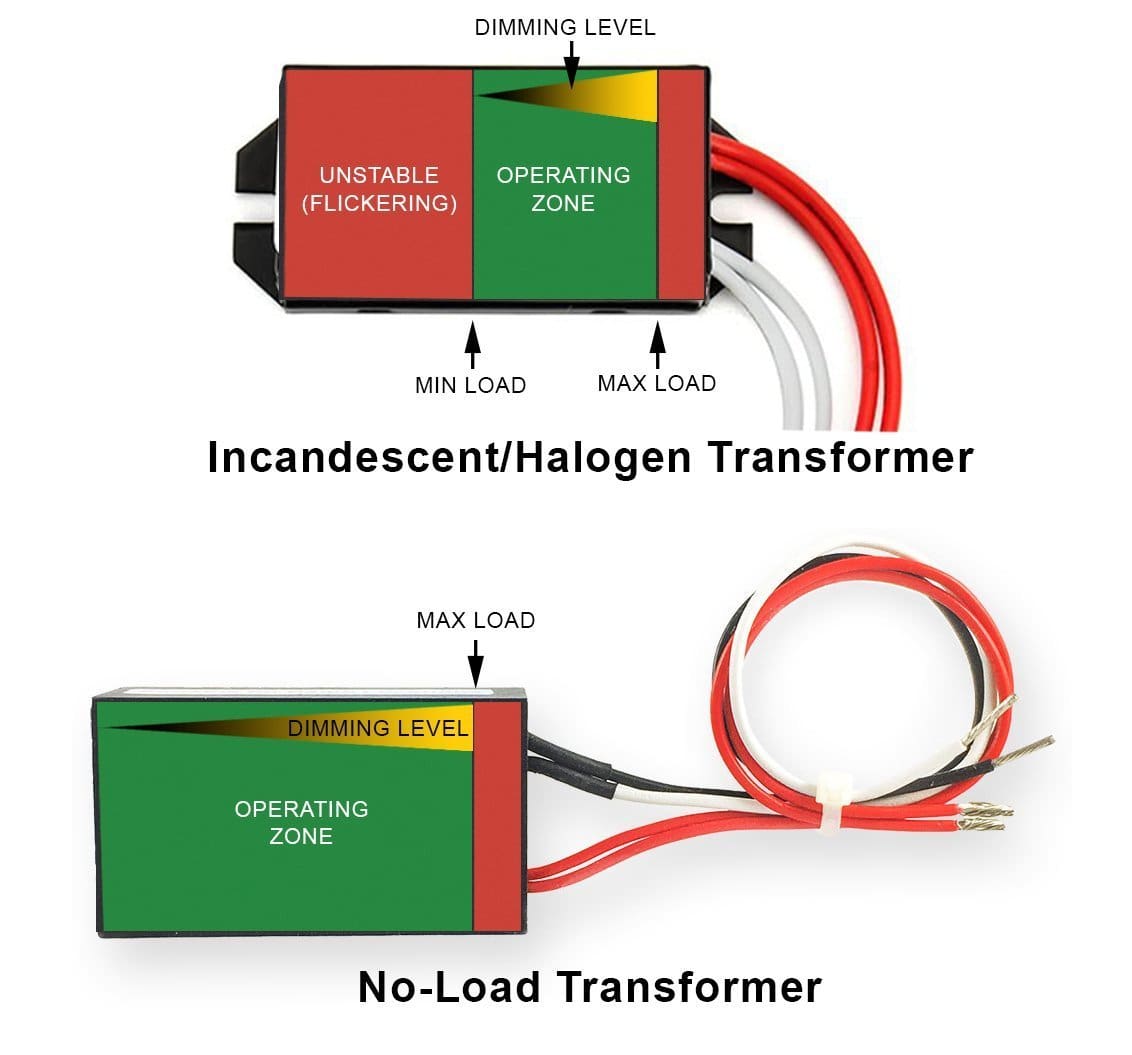
What Causes LEDs to Flicker?
LED bulbs can flicker for numerous reasons, the primary causes can differ depending on if you are using line voltage (120V) or low voltage (12V) bulbs. Let’s discuss the most likely problems and the solutions to keep your lighting smooth and consistent!
Photo Courtesy: Hinkley
120V Lighting Systems:
Incompatible or Low-Quality Dimmer – Typically line voltage LED lighting doesn’t have much perceived* flickering at all, if it does, it can most likely be traced to the dimmer. Line voltage uses waveform Alternating Current (AC). Incompatible dimmers will not pass sufficient power at lower loading levels, this will cause a rapid “start and stop” effect in any LED light source which is perceived as flickering. The best solution is to pair high-quality LED bulbs with approved dimmers such as the tested and proven LED+ dimmers from Lutron (formerly known as C·L Dimmers). These dimmers allow for more fine-tuned control of the dimming range and work with LED, incandescent, or CFL lighting.
* Rapid flickering (shimmer) may be noticeable up to around 80 hertz (Hz). Above that, it’s not visible to most people, however, can still cause headaches and eyestrain in some individuals over prolonged periods.
**

Photo Courtesy: Dan Polivy
12V Lighting Systems:
Incompatible Dimmers – A standard AC 120V incandescent/halogen dimmer is incompatible with low-voltage lighting.
12V Compatible Dimmers Include:
• Magnetic Low Voltage Dimmers (MLV)
• Electronic Low Voltage Dimmers (ELV)
MLV dimmers rely on inductive dimming methods, and ELV dimmers rely on capacitive dimming methods. It is advised with an MLV dimmer to use a magnetic transformer, and with an ELV dimmer to use an electronic transformer.

Incompatible Transformers – Transformers that are made for existing low voltage incandescent systems may not be well suited for LED bulbs. Improper transformers can cause a rapid start-stop effect that is perceived as flickering.
Incandescent transformers may require up to 50% loading for them to pass along adequate power to the light source. Within the “Unstable Zone”, flickering, and powering inconsistencies may occur. Smooth dimming operation may also be halted at lower power levels (from the dimmer) leading to abrupt powering inconsistencies.
To Expand:
- Turning On – 20% to 30% power from the dimmer may be required to properly load the transformer so that power may be passed on to the light source.
- Turning Off – The light source may power off abruptly with still 20% to 30% dimming range remaining on the dimmer – as adequate loading on the transformer is no longer being applied.
*These dimming percentages are merely an example. Your results may vary.
**
No-Load/Zero-Load Transformers:
A proper ‘no-load’ transformer enables a smooth dimming gradient without an inconsistent area of flickering. A no-load transformer will also allow for a minimum load of less than 0.5W for it to pass power along to the light source. A quality magnetic transformer is a good second choice for LEDs.
Summary:
For the best results with your LED systems, it is recommended to use a no-load or magnetic transformer in conjunction with an ELV or MLV dimmer (respectfully).
**Flickering LED bulbs may cause discomfort after prolonged exposure (migraines, headaches, nausea, seizures, etc.). If you have an LED bulb(s) that flickers, it is highly advisable to consult an electronic professional.

